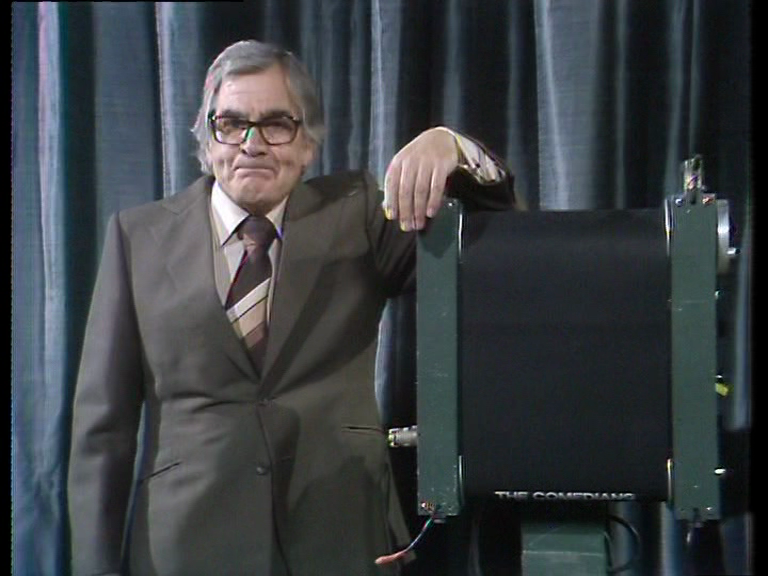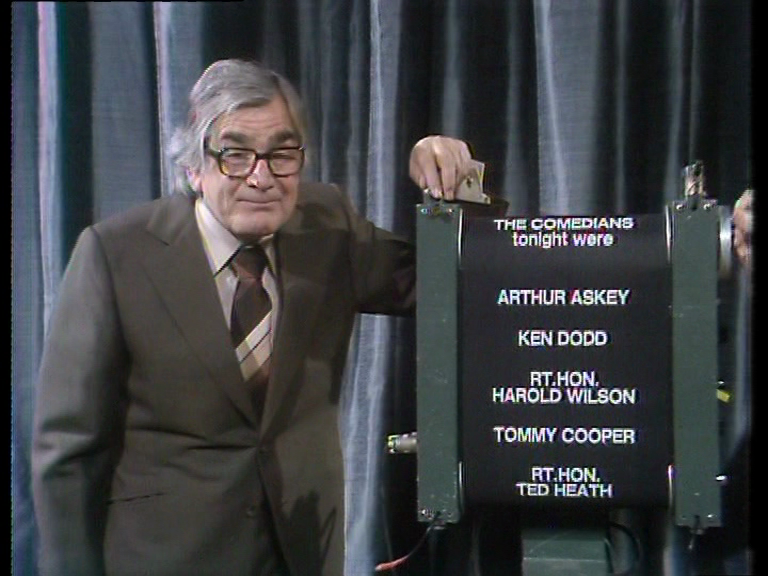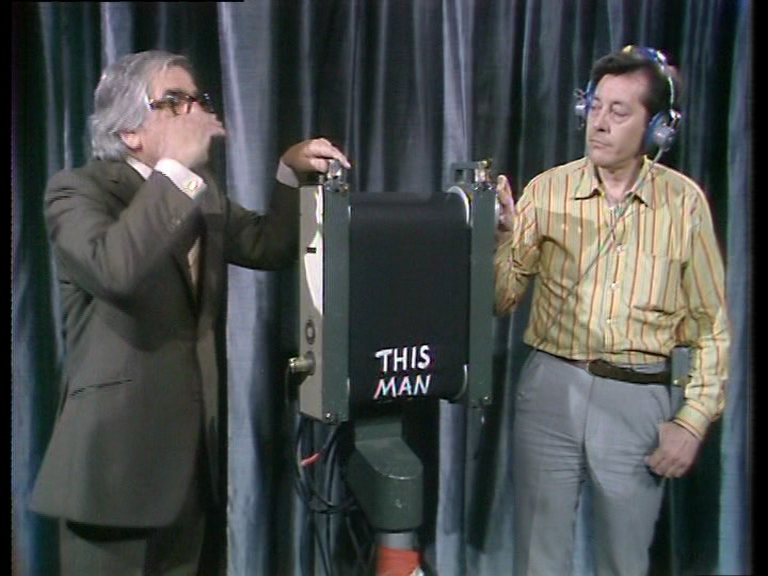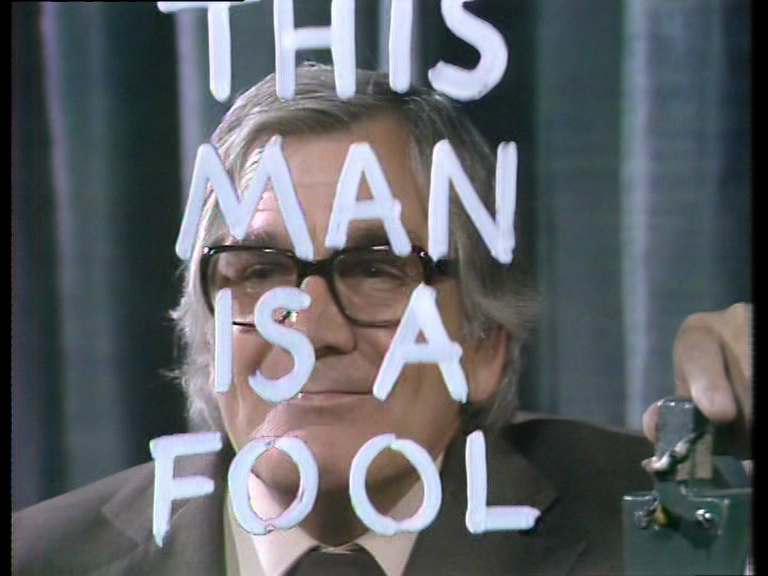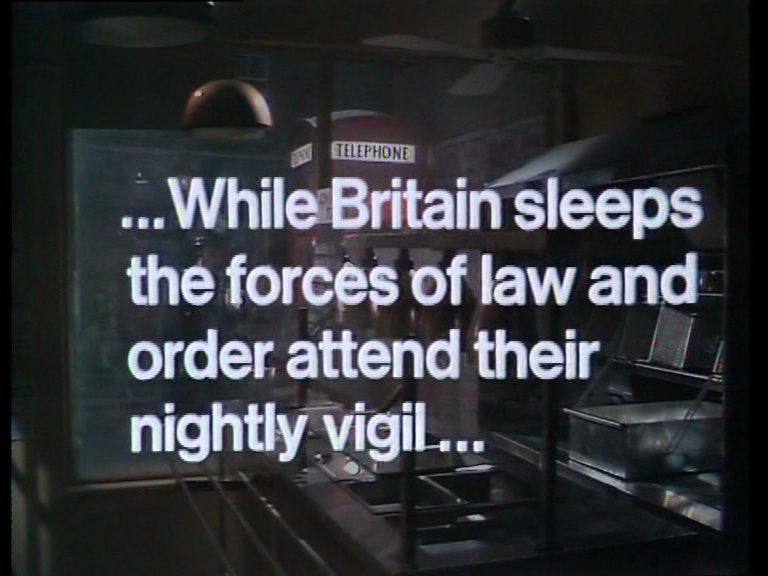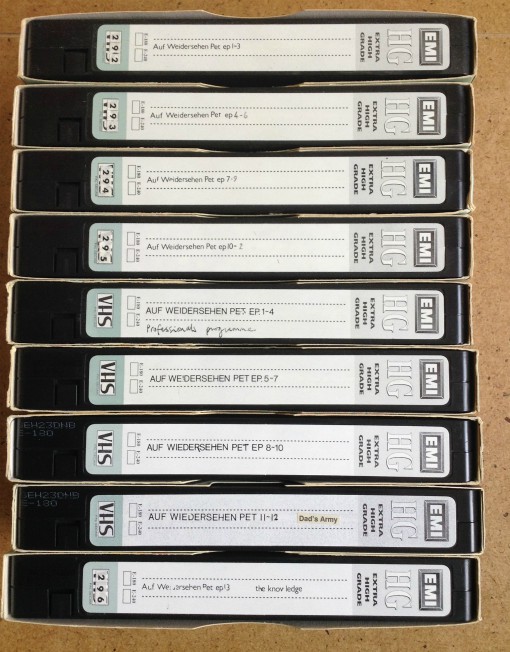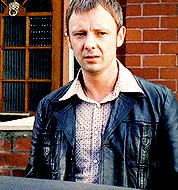Sparky
Producer
     Status? Would that be Credit or in Society?
Status? Would that be Credit or in Society?
Posts: 2,784 
Online Status: 
|
Post by Sparky on Jan 27, 2019 8:53:02 GMT
The 1993 clip was shot in the same place at the 1981 clip - though it looks as if it's had a bit of an upgrade. If I remember rightly, early "Old Grey Whistle Tests" came from Pres A or B in TV Centre; whichever was shared with the weather.
I remember Bob Harris recalling on R2 that the studio was shoved "behind a lift shaft", where very small and hungover bands had to perform to cameramen in cardigans, with big sideburns and smoking pipes at 9.30am.....
Amazing clip, that with Mr Schofield - it's funny that he only knows about what 2 of the monitors actually do. I would think, the other smaller ones are for Telecine Machines, Live feeds in (O/Bs), perhaps a feed from BBC News, more than likely a Euro feed, possibly a satellite feed.
As for disgruntled employees putting out things they shouldn't. I have never heard of it ever happening.
Though I suppose it's possible for "in jokes" to appear, unknown to the viewer - but at the same time, with such responsibility of an entire network or region's Television - and in ITV's case - control of the crucial adverts- they had to be on their best behaviour.
Though - each station did (not sure if they do it now); record a daily "off air tape"; this was recorded via the "off air feed" through a bog standard TV Aerial - this recorded everything that the station put out that day - Adverts, Trails, Programmes, Announcements etc. These tapes, for each day, would be stored in the library. Just in case complaints were received about any aspect of the days programmes. So - errors/jokes and the like could be easily recovered from the "Off Air" tapes, and those responsible sent off with a P45....
These tapes in the past have been the source for finding lost/wiped programmes.
Though - in more recent times, there has been some controversy (what in the TV industry -never!) over where many of these tapes have since ended up - as only a majority of stations have only seem to have kept a couple of compilations - the BBC, have a compilation of "Idents/Globes and announcements" from over the years. Some ITV companies, did the same, and only a few bits and pieces exist. Many stations just junked it all and forgot about "the past"
Such a shame really, as many a lost programme would have stood some chance of being recovered - and it presents a picture of how TV once was. I'd have happily sat through all the tapes seeing what was on them!!
Central did have a couple of "off airs" from around 1980 from the ATV days; though the programmes had been (badly) edited out - and was more a compilation of Announcers, Adverts and Trailers and some local bits - even a "Local Curry House Advert"....!!
|
|
|
|
Post by Arthur Pringle on Feb 6, 2019 16:47:35 GMT
Watching an edition of Harry Worth's sketch show '30 Minutes Worth' the other day, he demonstrates a caption roller machine used to display titles on tv shows. The man on the right turns a handle at the side of the machine & the roll moves up. Not sure how the titles then appear on the screen, maybe Sparky can fill us in.
|
|
Sparky
Producer
     Status? Would that be Credit or in Society?
Status? Would that be Credit or in Society?
Posts: 2,784 
Online Status: 
|
Post by Sparky on Feb 7, 2019 7:39:11 GMT
Great find. I remember seeing these at Central; though hadn't been used in a number of years.
Just think - someone had to manually put the captions on with Letraset transfers......
The BBC sometimes used to use a roller that went sideways; mainly on episodes of "Monty Python" and "Some Mothers Do 'ave 'em". On may episodes you could see it stick as it rolled by!!!
ATV used a custom built thing for the credits of "Crossroads", where each caption was on a card, and would slide in - hold - slide out, Move up - Hold - Move out - obviously this had to be done manually by a floor manager. Sliding each caption "on cue".
|
|
Sparky
Producer
     Status? Would that be Credit or in Society?
Status? Would that be Credit or in Society?
Posts: 2,784 
Online Status: 
|
Post by Sparky on Feb 7, 2019 13:11:54 GMT
I forgot to answer the question...
The caption Roller -
How this works; the roller would be positioned somewhere at the side of the studio floor, alongside the "caption stand" (a music stand on steroids). A studio camera would be positioned in front of either roller when required. And another on the Caption stand.
In usual cases; the camera feed from the roller would be just shown on screen, Black Back / White text. At the end of the credits, the second camera aimed at the Caption Stand would be "mixed" to replace the feed from the roller. The Caption stand would have the company logo on.
Obviously, this ties up two cameras; some companies put their logos on the end of the roller, after the text, so only used one camera. Others had a logo on a caption board in the presentation area, this signal could be routed to any of the studios to mix in. The BBC did this with the Test-Card. It could be patched to any studio/monitor anywhere - from one feed.
On screen, the black background can be removed - to leave only the white text, and superimposed over the picture.
The BBC1 globes and Clock were all B&W; the blue colour was added electronically.
In the days of World of Sport / Grandstand - they had "duty" graphics artists, working on a workbench in the actual studio, making up the captions as the Football Results came in, and also making up the revised League Tables. These captions - would then be put "hot off the press" on the caption stands to be fed into the Results service.
For the matches; cards would be made up beforehand with the fixtures - all that need be done later on, was to add the final scores.
Who the heck needs computers??
|
|
|
|
Post by Arthur Pringle on Feb 7, 2019 17:18:36 GMT
Thanks for the explanation Sparky. I had wondered about the Some Mothers titles. I've always been fascinated by Letraset for some reason, I think it might stem from seeing the packets of rub on letters in the local newsagent, I also used to have a Letraset catalogue.
Years ago I would use rub on letters to label my videotapes, I found it very satisfying despite managing to spell 'wiedersehen' wrong.
|
|
|
|
Post by Sam Tyler on Feb 7, 2019 21:55:52 GMT
Blimey Tiger, numbering your VHS tapes too? That is serious stuff, were they all catalogued as well? My old tapes had hand-scribbled labels, peeled off or torn labels, no labels, Sellotaped labels and it was always a bugger's muddle trying to find any particular tape. Hoorah for good quality PVRs with user-friendly menus!  (I did buy a PVR/DVD Recorder once, won't mention the brand and it definitely wasn't cheap, but the menu system was utter shite!) Anyway,  Sam. |
|
|
|
Post by Arthur Pringle on Feb 7, 2019 23:06:21 GMT
I gave up numbering them eventually Sam, then even gave up labelling them ( stuck a post it note to the box with the contents in biro instead ), then of course gave up recording from tv altogether when there was nothing worth keeping. Funnily enough I was looking through the drawers I keep them in yesterday & wondering if I should throw them out.
|
|
Sparky
Producer
     Status? Would that be Credit or in Society?
Status? Would that be Credit or in Society?
Posts: 2,784 
Online Status: 
|
Post by Sparky on Feb 8, 2019 9:10:09 GMT
Letraset has always fascinated me - as I first came across it at school, and a catalogue with a myriad of Fonts and styles.
When we were younger, my brother and I used to make stop frame 8mm films (beats chucking bricks through windows) - and had to spend ages in WH Smith or some local stationary supplier finding different styles in white - which we would transfer to black card, use a couple of table lamps to light it, and film it. (We even mastered a way of creating superimposed captions - by physically rewinding the negative in total darkness, and double exposing the captions on top of the already exposed picture). Not Lucas arts, but it worked!
We could never get the letters perfectly straight - or suss out how to use the grid thing you got with it.
I love the labelled Video tapes; you got it much neater than I ever could!
I used to number videos; and then when I transferred most of it to DVD; I ended up re-numbering it all, so I could find what I wanted more easily.
|
|
Sparky
Producer
     Status? Would that be Credit or in Society?
Status? Would that be Credit or in Society?
Posts: 2,784 
Online Status: 
|
Post by Sparky on Feb 8, 2019 9:32:48 GMT
Some more photos...
This is the BBC "noddy"; basically a remote / robotic caption camera, which had it's own room alongside the main presentation dept in TV Centre. This is a 1960s picture for BBC 2. Each caption is made up on card/wood.
The camera is remote controlled by the Continuity Announcer/Transmission Director - at the touch of a button. By the press of the button, any caption could be selected and faded in on screen.
This is a 1979 photo of the BBC 1 "noddy" - you can see the various fault captions, the BBC1 Globe and also the (then) revised Schools Clock.
This is the Caption stands for the "World of Sport" results service. Many are still waiting for the final score. This would use two studio cameras alternating (one for each stand) - starting with "Division 1" on the RH stand. Then "Division 2" would be from stand on the left.
The cubes on the top with the captions rotate manually, so a new caption board can be positioned quickly before appearing on screen.
|
|
Del Boy
Moderator     
Posts: 9,994 
Online Status: 
|
Post by Del Boy on Feb 8, 2019 22:58:47 GMT
Love that final score picture. Always remember watching it on Saturday afternoons. Some times you would see a result updated whilst it was on camera. Usually a late kick off finishing while the scores were read. It would slide in to place a bit like the Blankety Blank prize board.
|
|


